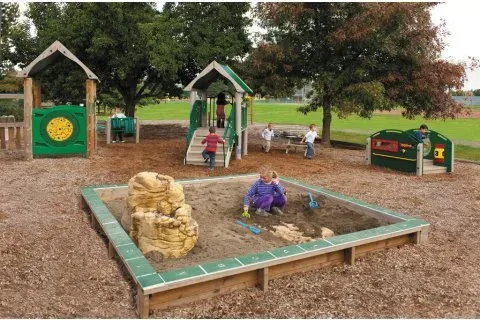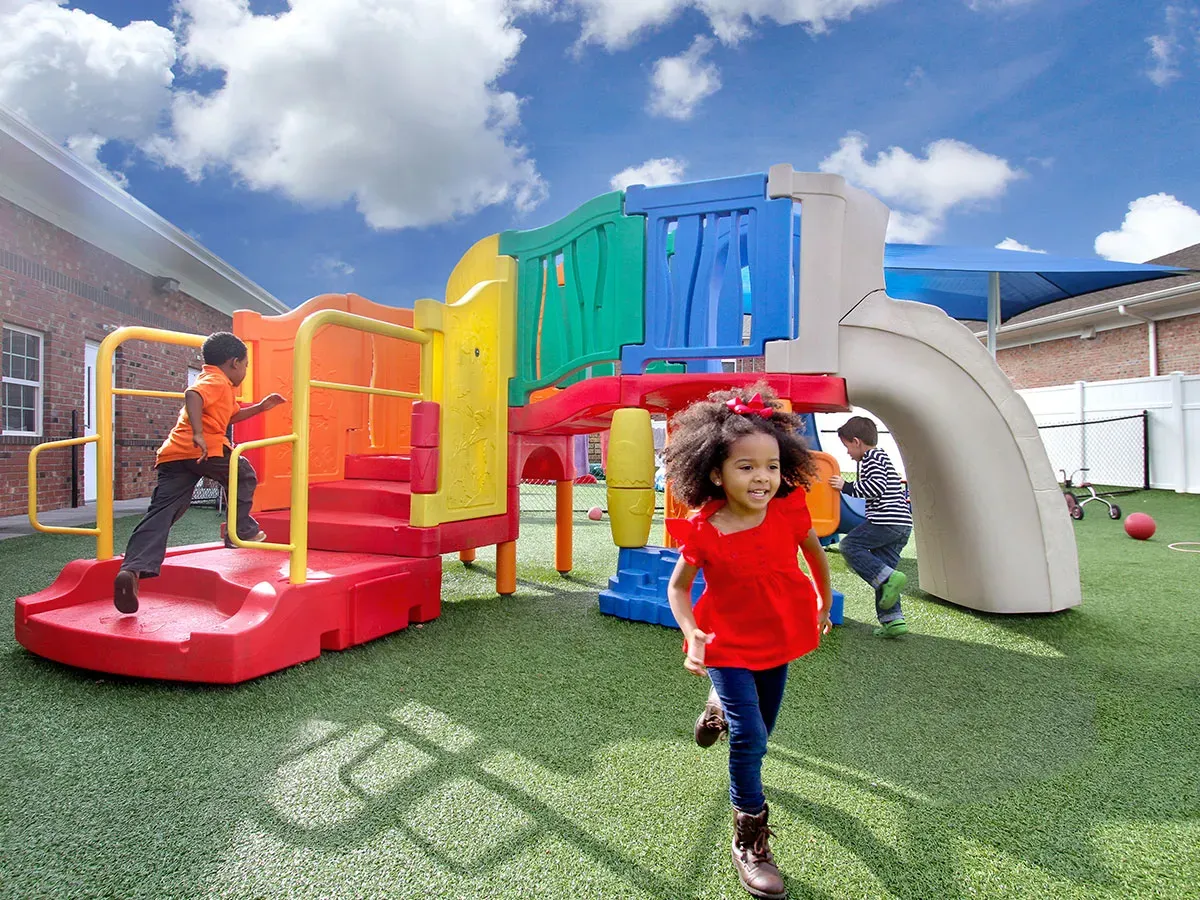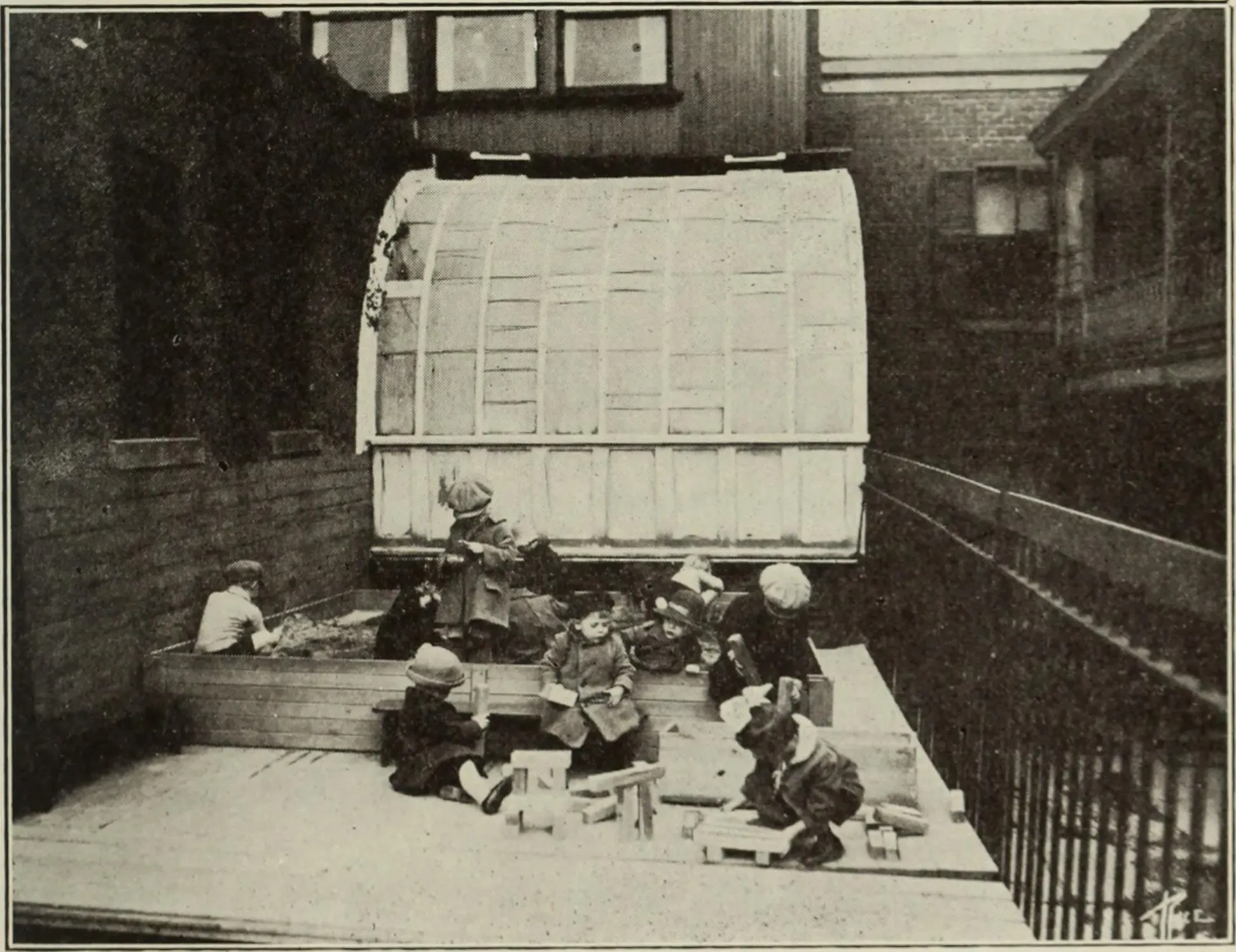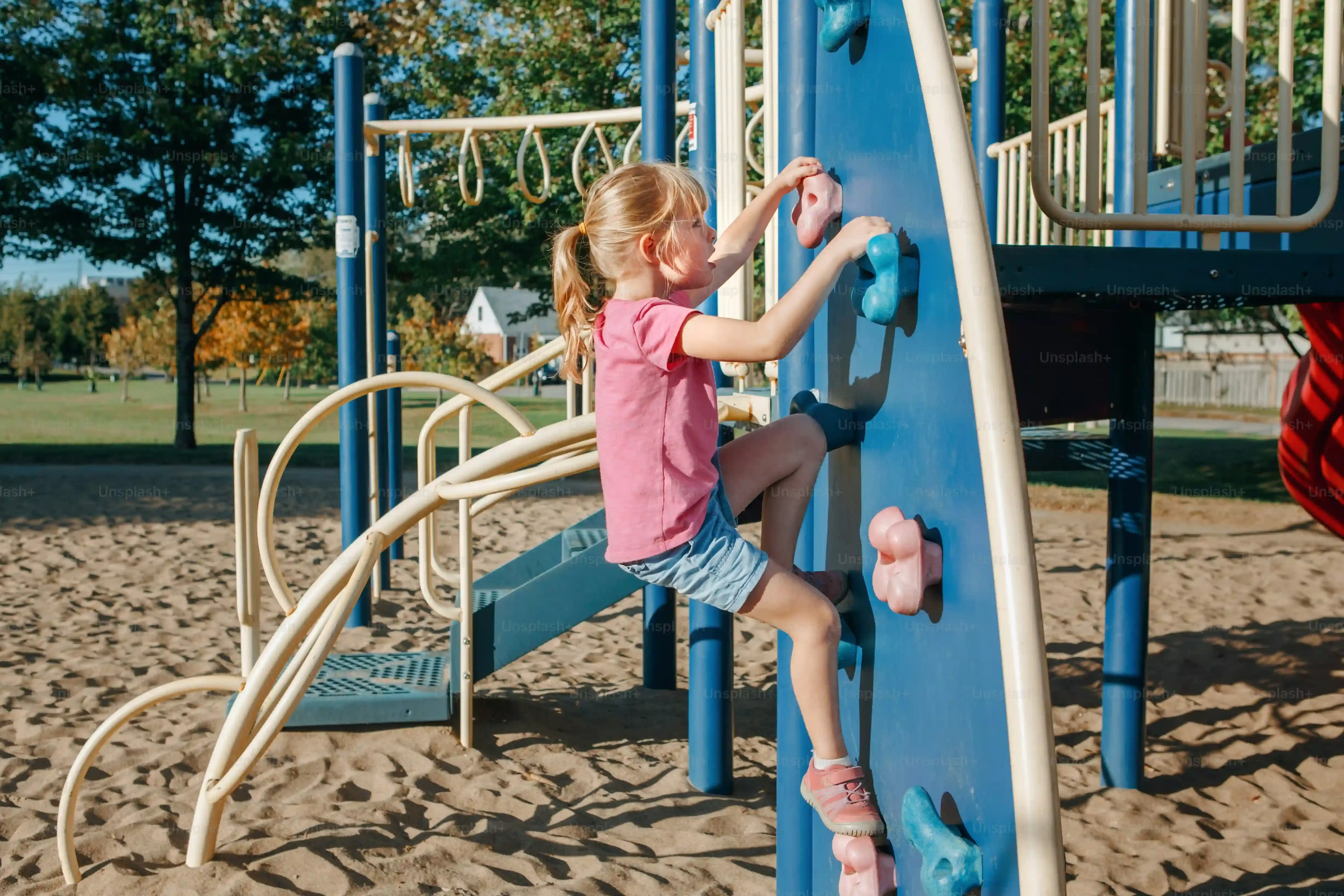Table of Contents
Watch a group of preschoolers outside, and you’ll see magic happen. They’re running, climbing, imagining, and figuring things out at a million miles an hour. Outdoor play isn't just recess; it's a crucial part of how young children learn about the world, test their limits, and build essential skills. But to make that magic happen safely and effectively, you need the right tools. That’s where quality preschool outdoor playground equipment comes in.
Why Preschool Outdoor Play Matters

Why Preschool Outdoor Play Matters
Forget the fancy screens and structured classes for a minute. When kids aged two to five step outside, something fundamental shifts. They aren't just burning off energy; they are building the foundation for pretty much everything else. Think about it: climbing a small rock wall teaches problem-solving and spatial awareness. Running across a grassy field develops gross motor skills and coordination. Digging in the dirt? That's sensory exploration, fine motor practice, and maybe even a little science lesson about worms or mud pies. This isn't optional enrichment; it's essential developmental work that happens best when they are moving, exploring, and interacting with the unpredictable, real world outside. It’s where they learn resilience by falling down and getting back up, negotiate with friends over who gets the bucket, and use their imaginations to turn a simple slide into a rocket ship. Without this kind of play, crucial pieces of their physical, cognitive, and social-emotional puzzle just don't fit together as well.
Selecting the Best Preschool Outdoor Playground Equipment

Selecting the Best Preschool Outdoor Playground Equipment
Start with Your Space and Budget
Alright, so you're convinced outdoor play is vital. Great! Now, staring at an empty patch of grass or a tired old swingset, where do you even begin? The first, most grounded step is looking honestly at your space and your wallet. How much room do you actually have? Is it a long, narrow strip, or a wide-open square? Are there any existing trees or structures you need to work around? Sketch it out. Measure it. Knowing the dimensions helps instantly narrow down options. Then, get real about the budget. Quality preschool outdoor playground equipment is an investment, no doubt, but prices vary wildly. Having a clear financial picture up front prevents falling in love with a piece that’s completely out of reach. This initial assessment grounds the whole process, making it less overwhelming.
Consider Age and Developmental Goals
Once you know your limitations, think about the kids themselves. We're talking preschoolers, generally ages 2-5, but even within that range, needs differ. A wobbly two-year-old needs different challenges than a confident five-year-old. What skills do you want to foster? Is it climbing confidence, social interaction, imaginative play, or fine motor skills? The best preschool outdoor playground equipment caters specifically to these stages and goals. Look for equipment designed for their size and skill level – lower climbing walls, slides with gentle slopes, and interactive panels at their height. Mixing equipment that supports different types of play ensures everyone finds something engaging.
- Look for equipment height appropriate for small children.
- Ensure activities promote gross motor skills (running, jumping, climbing).
- Include elements for fine motor practice (sand play, activity panels).
- Seek out structures that encourage social interaction and imaginative play.
- Check age ratings provided by manufacturers carefully.
Focus on Materials and Durability
Nobody wants to replace playground equipment every few years. This stuff lives outside, exposed to sun, rain, snow, and a constant barrage of enthusiastic little humans. The materials used in preschool outdoor playground equipment make a huge difference in its lifespan and safety. Look for durable, weather-resistant materials like commercial-grade plastic, powder-coated steel, or recycled plastic lumber. Wood can be great, but it requires more maintenance like sealing and checking for splinters. Ask about warranties. A solid warranty often indicates a manufacturer stands behind their product's durability. Checking reviews and asking other centers about their experiences with specific brands can also provide valuable insights into how equipment holds up over time.
"Choosing playground equipment isn't just about picking something colorful; it's about selecting materials built to withstand years of active play and harsh weather," remarked one seasoned daycare director.
Essential Safety Features for Preschool Outdoor Playground Equipment

Essential Safety Features for Preschool Outdoor Playground Equipment
The Ground Rules: Safe Surfacing is Non-Negotiable
let's talk about the inevitable: kids fall down. It's part of learning, but it shouldn't result in a trip to the emergency room. This is why the surface *under* your preschool outdoor playground equipment is arguably as critical as the equipment itself. Concrete? Asphalt? Hard-packed dirt? Absolutely not. You need something that absorbs impact. Think engineered wood fiber (EWF), rubber mulch, poured-in-place rubber, or rubber mats. Each has pros and cons regarding cost, maintenance, and accessibility, but the goal is the same: provide a forgiving landing. Check the required depth for loose-fill materials like EWF or rubber mulch – it's usually measured in inches and depends on the fall height of the equipment. Poured-in-place rubber offers a seamless, accessible surface but comes with a higher price tag. Whatever you choose, make sure it meets current safety standards for fall attenuation.
Avoiding the Ouch: Smart Equipment Design and Pinch Points
Beyond what's underfoot, the design of the preschool outdoor playground equipment itself is paramount for safety. Look for equipment free of potential traps for little fingers, heads, or clothing. We're talking about pinch points, crush points, and openings that could entrap a child's head. Slides should have high sides to prevent falls. Guardrails should be appropriately spaced. Swings need safety seats designed for young children, often with full bucket support. Any moving parts should be designed to prevent injury. It sounds obvious, but you'd be surprised. A quick visual inspection should reveal smooth edges, secure fastenings, and no sharp protrusions. If something looks like it could snag a drawstring or catch a tiny hand, it's probably not suitable for this age group.
When evaluating equipment design, ask yourself:
- Are there any gaps where a child's head could get stuck? (Think less than 3.5 inches or more than 9 inches).
- Are there pinch points where components meet or move?
- Are surfaces smooth and free of sharp edges or splinters?
- Are guardrails and barriers sufficient for the equipment height?
- Are steps and climbing holds sized appropriately for small hands and feet?
Mind the Zone: Fall Zones and Regular Check-Ups
Simply placing equipment on a safe surface isn't the whole story. Each piece of preschool outdoor playground equipment requires a specific "fall zone" – a clear area around it where the protective surfacing must extend. This zone accounts for how far a child might fall or exit the equipment. For swings, this zone is quite large, extending well in front and behind the swing set. For slides, it's primarily at the exit point. Manufacturers provide guidelines for these critical zones; ignore them at your peril. Furthermore, safety isn't a one-time installation check. Regular inspections are crucial. Daily checks for obvious hazards like broken glass or foreign objects, weekly checks for loose bolts or damaged parts, and annual professional inspections can catch issues before they cause injuries. A well-maintained playground is a safe playground.
Is your fall zone wide enough, or are you just hoping for the best when a kid takes a tumble off the slide?
Specific Preschool Outdoor Playground Equipment for Toddlers (Ages 25)

Specific Preschool Outdoor Playground Equipment for Toddlers (Ages 25)
so you've got the space, the budget sorted, and you're obsessed with safety (as you should be). Now comes the fun part: picking the actual gear. For the 2-5 crowd, you’re not looking for towering structures or high-speed slides. Their world is lower to the ground, focused on fundamental movements and sensory exploration. Think small, accessible climbers that offer just enough challenge without being intimidating. Bucket swings are essential – the kind that wrap around them securely, giving them that thrilling feeling of flying with zero risk of tumbling out headfirst. Sand and water tables, or simple digging areas, are pure gold for fine motor skills and imaginative play. And slides? Keep them low and wide, maybe with a gentle wave, perfect for that first solo slide experience. It’s about building confidence and coordination with equipment scaled precisely for their still-developing bodies and bravery levels.
- Low-level climbers with wide steps and easy-to-grip handles.
- Full-bucket swings designed for secure seating.
- Sand and water play stations or sensory tables.
- Small, gentle slides with safe run-out areas.
- Play panels featuring activities like gears, mirrors, or musical elements.
- Balance beams or logs close to the ground.
Making the Most of Your Preschool Outdoor Playground Equipment

Making the Most of Your Preschool Outdoor Playground Equipment
Alright, you’ve done the heavy lifting: researched, budgeted, selected safe, age-appropriate preschool outdoor playground equipment, and got it installed. Now, how do you make sure it's not just a static collection of plastic and metal, but a dynamic extension of the classroom? It’s not enough to just open the door and say "go play." You need to actively facilitate engagement. Think about integrating themes – if you're learning about oceans inside, maybe the sand area becomes the beach, and the climber is a pirate ship. Provide props like buckets, shovels, steering wheels, or fabric scraps to spark imaginative scenarios. Introduce simple games that utilize the equipment, like "follow the leader" on the balance beam or a scavenger hunt for specific colored objects hidden around the play area. Observing how children interact with the equipment also gives you valuable insights into their development, social dynamics, and problem-solving strategies, allowing you to tailor future activities.
Making Play Count with the Right Gear
Getting the right preschool outdoor playground equipment isn't just about filling a space; it's about investing in the development of young minds and bodies. We've talked about why outdoor time is non-negotiable, the specific types of gear that hit the mark for this age group, and the absolute must-haves for safety. Choosing wisely means creating an environment where kids can build strength, solve problems, navigate social cues, and let their imaginations run wild. It's about providing a foundation for learning through play, ensuring that those precious hours spent outside are as enriching and safe as possible.